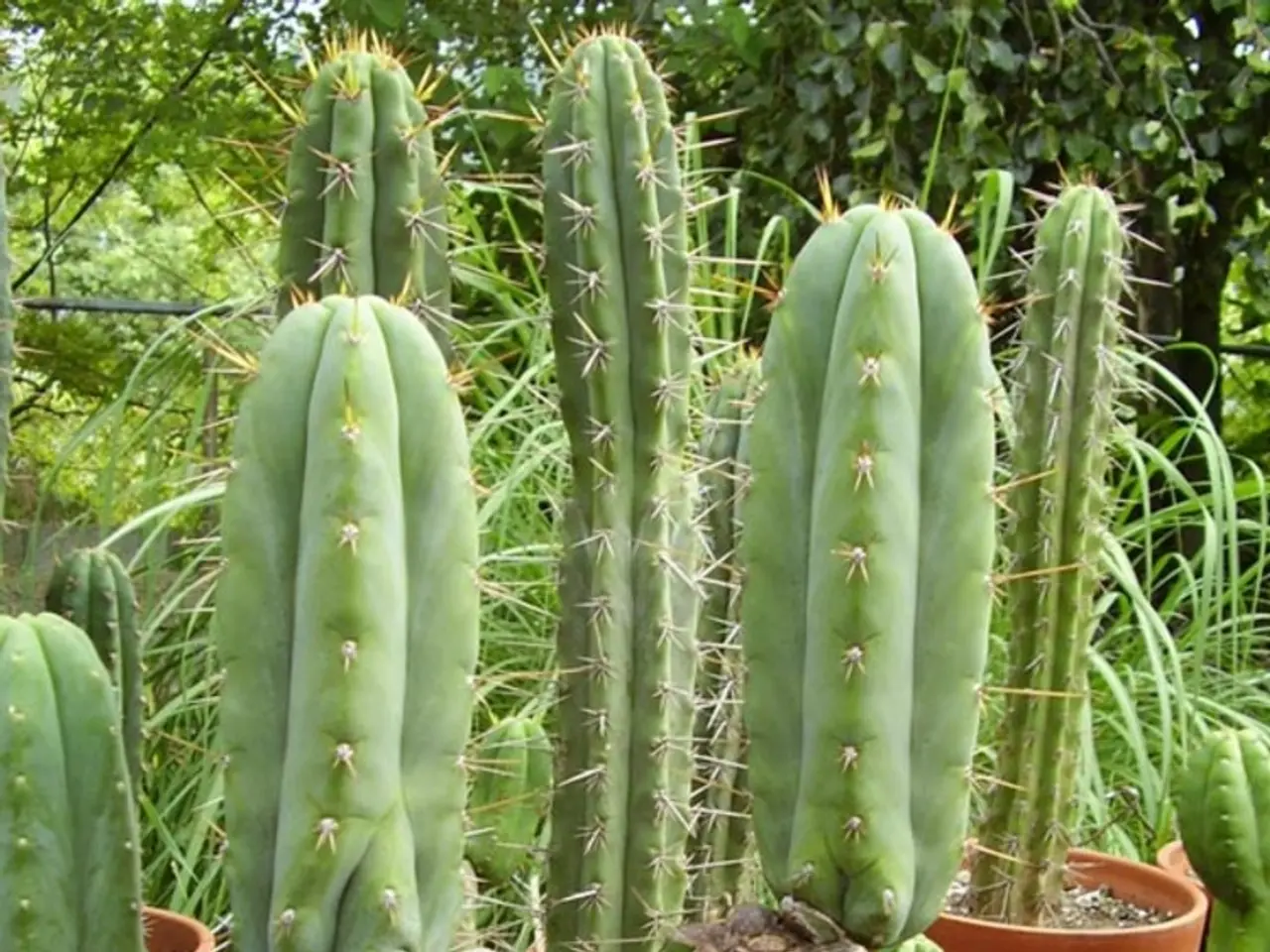Practical advice for cultivating flowers and plants in elevated containers
In the world of gardening, raised beds have become a popular choice for those with limited space or soil that doesn't suit their desired plants. These garden structures can be made from various materials, each with its own set of benefits and drawbacks.
Cedar stands out for its natural oils that repel insects and resist decay. Western Red Cedar, in particular, is a popular and durable choice, lasting up to 20 years or more without treatment. It is stable, does not warp or shrink easily, and is preferred for its long life and plant safety.
Redwood and Cypress are similarly rot-resistant and durable choices, often selected for their longevity and natural resistance to fungal decay.
Juniper, Yew, Chestnut, and Black Locust are also naturally rot-resistant woods suitable for raised beds, though availability may vary regionally.
Pine is generally cheaper but less durable unless pressure-treated and kiln-dried. Treated pine can last at least 10 years but is less stable and shorter-lived compared to cedar.
Composite decking is an alternative for raised beds that is durable and non-toxic but technically not wood.
Cedar wood kits, often kiln-dried and designed to allow for natural wood movement, optimize bed longevity and ease of assembly.
For the best combination of durability, natural resistance, and plant safety, cedar wood is the most recommended choice, closely followed by redwood and treated pine depending on budget and local wood availability.
When constructing a raised bed, it's essential to consider the location. The amount of sunlight and rain the bed receives can significantly impact what can be grown. Raised beds next to fences and walls may require more watering due to being in a rain shadow.
The width of a raised bed should be no more than 1.5 meters to avoid stepping on the soil when weeding or harvesting. Raised beds make an attractive feature and can also double up as a place to sit.
If you choose to use wood for your raised bed, it should be treated to make it last longer than untreated wood. To further extend its life, it's a good idea to line the sides and any buttresses with plastic.
Remember, raised beds can dry out more quickly than topsoil in the garden, so be sure to keep on top of watering. Ants are attracted to warm, dry places, so if you cover your raised bed with membrane to suppress weeds, you could well end up with ants living in it. The easiest way to encourage ants to move on is to water the bed, as they need conditions to be dry.
Fill the beds right to the top, then leave for two weeks to settle before planting. Over time, the compost in your raised beds will compact, leading to a tall brim around the edge that can shade the plants within. Top it back up where possible.
Mediterranean plants can be grown in raised beds filled with gritty compost. Acid-loving plants, such as blueberries and rhododendrons, can be grown in raised beds with ericaceous compost. Acid-loving plants will need to be grown in ericaceous compost, while alkaline-loving plants may benefit from the addition of mushroom compost.
Consider long-term feeding with a slow-release fertiliser at the outset, then top up with a liquid feed through the season if needed. If a raised bed is on top of concrete or paving, drainage should be added in the form of rubble, stones, or crocks at the base. Add drainage holes if a waterproof liner is covering the base, or use a geotextile membrane layer for the base, which allows water to pass through.
With these tips in mind, you're now equipped to make an informed decision about the material for your raised garden bed and ensure a thriving garden for years to come.
[1] The Spruce. (2021). The Best Woods for Raised Garden Beds. [online] Available at: https://www.thespruce.com/best-woods-for-raised-garden-beds-1418212
[2] The Spruce. (2021). Composite Decking for Raised Garden Beds. [online] Available at: https://www.thespruce.com/composite-decking-for-raised-garden-beds-1418214
[3] Gardener's World. (2021). What Wood to Use for Raised Beds. [online] Available at: https://www.gardenersworld.com/how-to/grow-your-own/what-wood-to-use-for-raised-beds/
[4] BBC Gardeners' World. (2021). The Best Wood for Raised Beds. [online] Available at: https://www.bbc.co.uk/gardening/howto/make_a_raised_bed/best_wood
[5] BBC Gardeners' World. (2021). Choosing Wood for Raised Beds. [online] Available at: https://www.bbc.co.uk/gardening/howto/make_a_raised_bed/choosing_wood
- Home-and-garden enthusiasts planning to build raised beds for their lifestyle should consider using cedar wood, which is highly recommended due to its natural oils that repel insects, long life, and plant safety.
- For those seeking alternatives to traditional wood materials, composite decking offers a durable and non-toxic option for raised beds in the home-and-garden setting, though its availability may vary.



